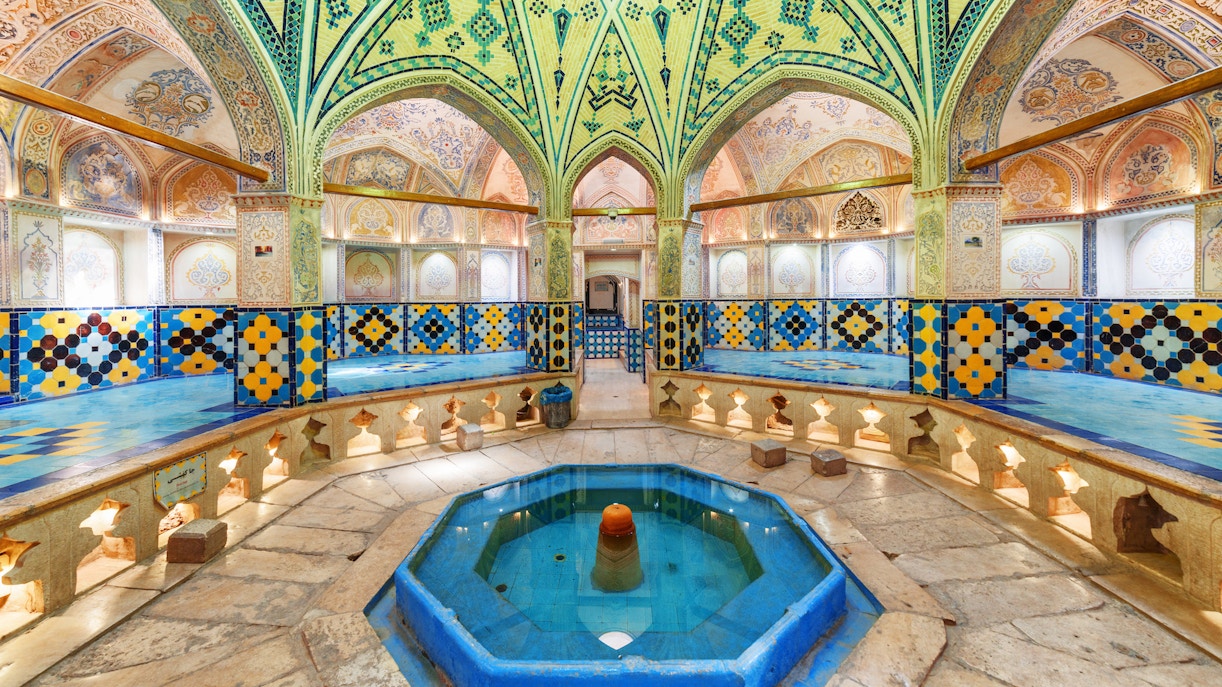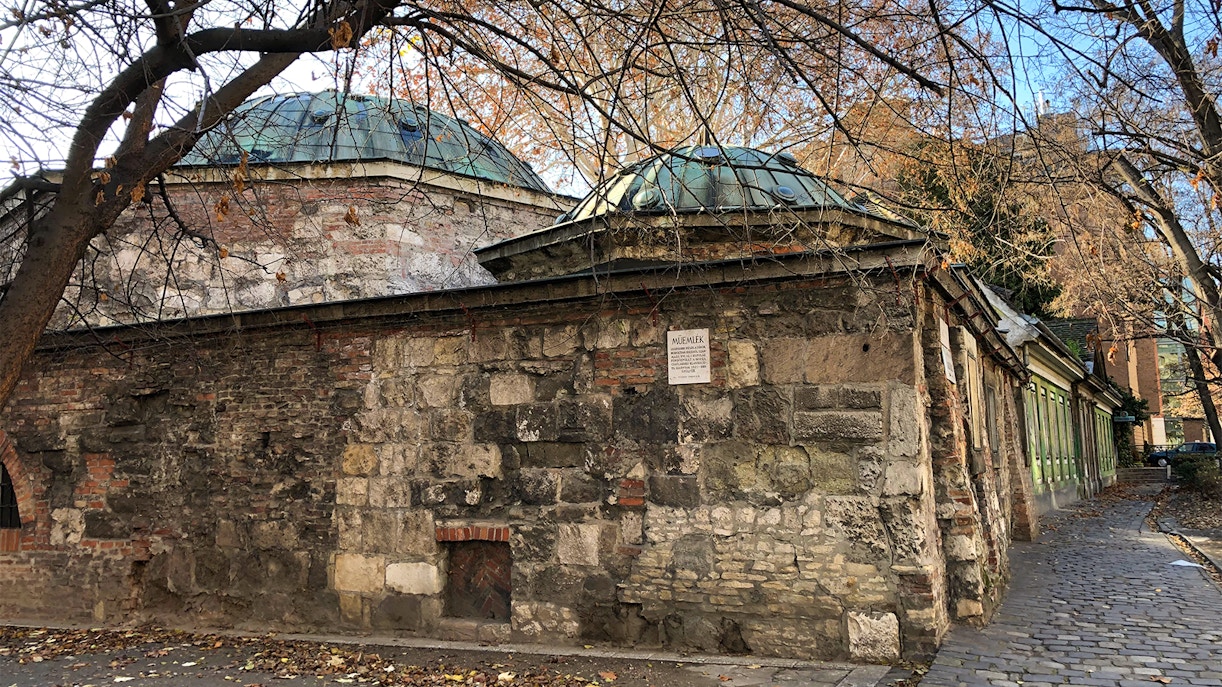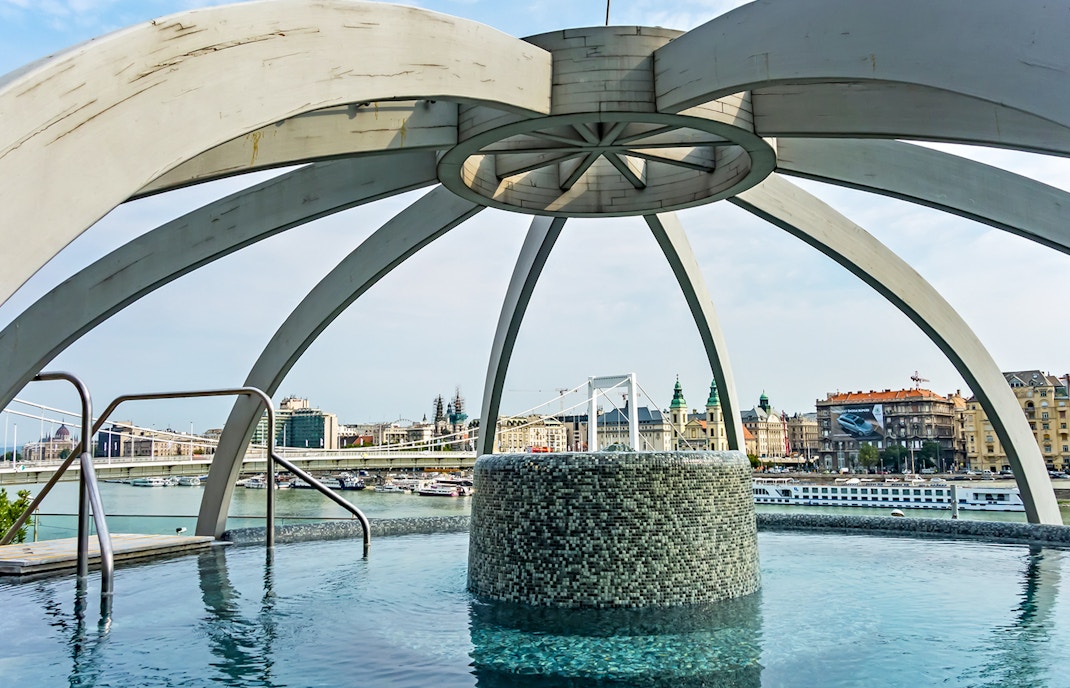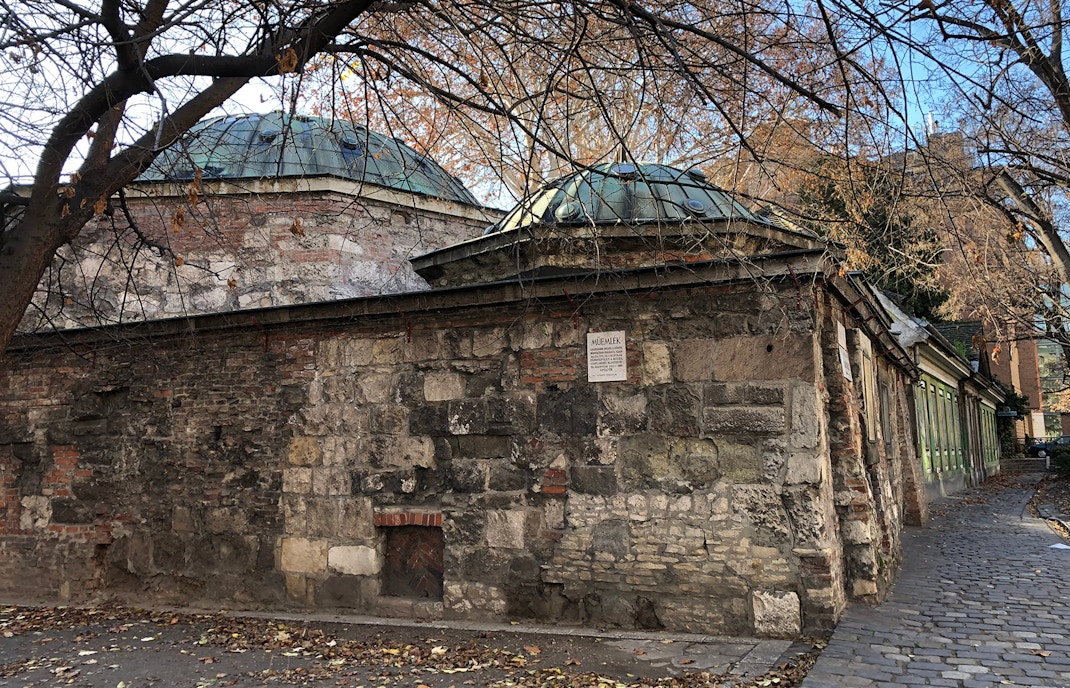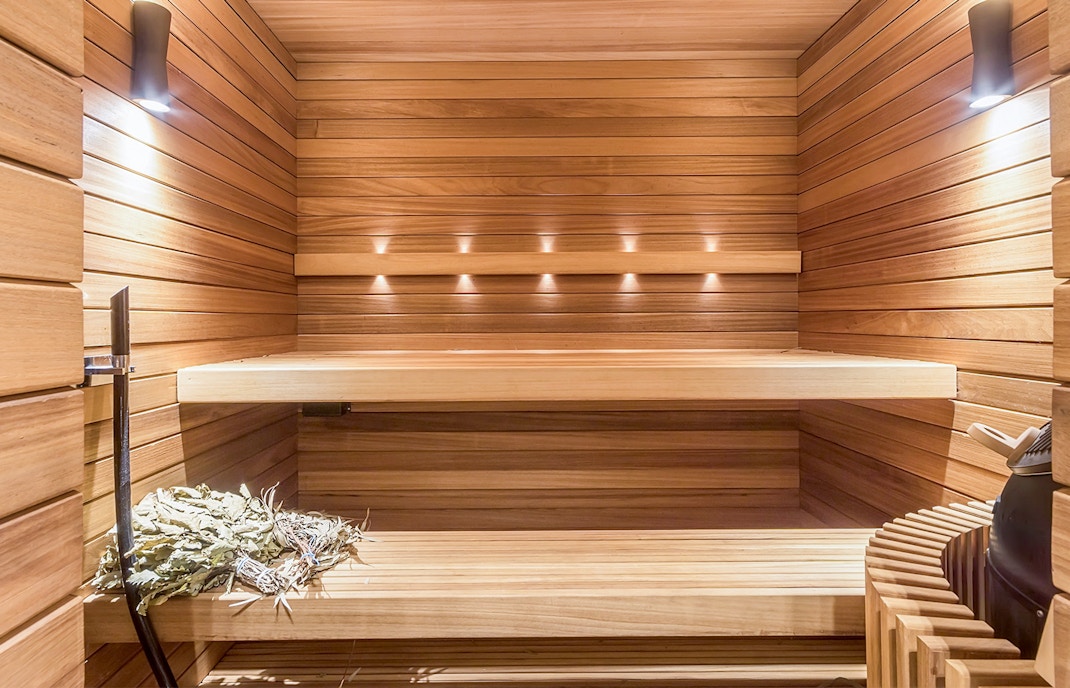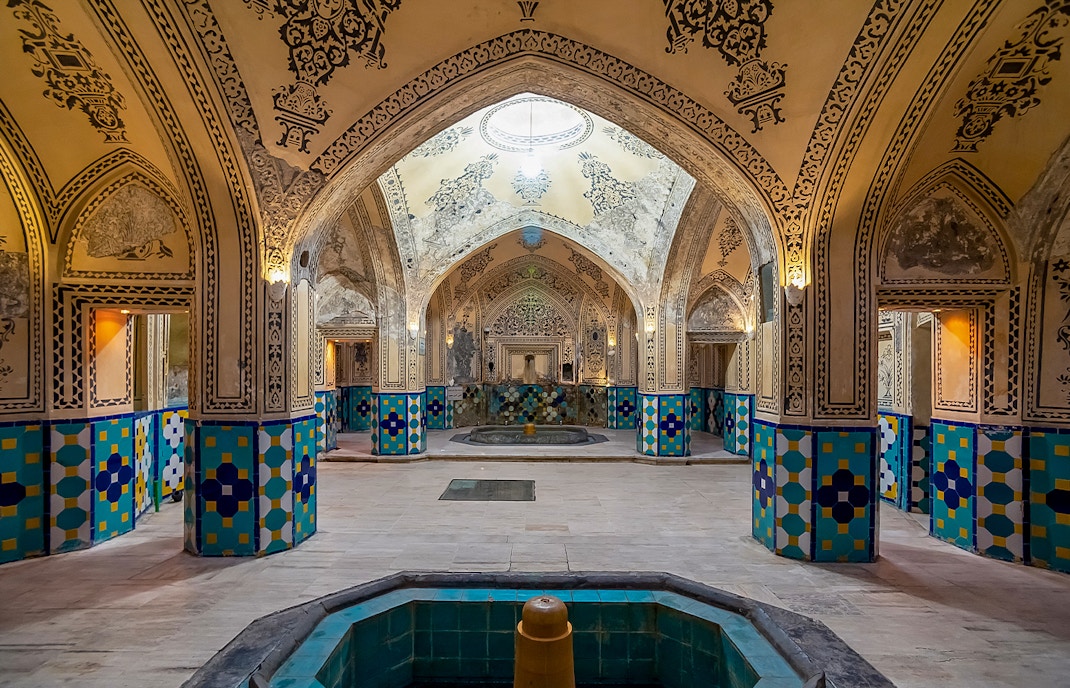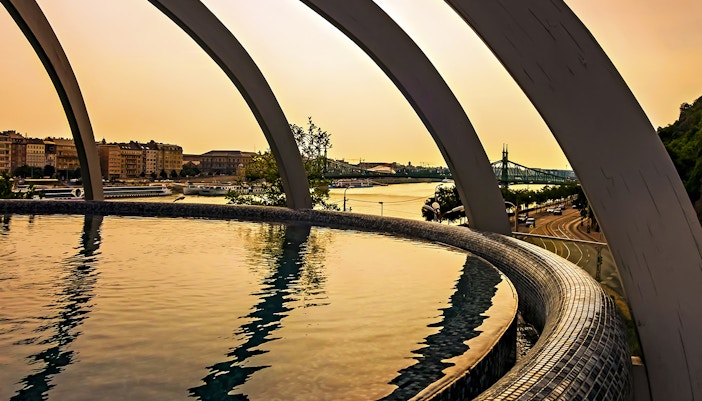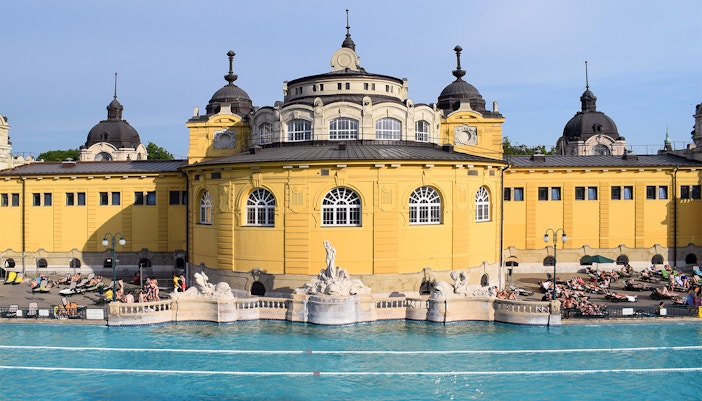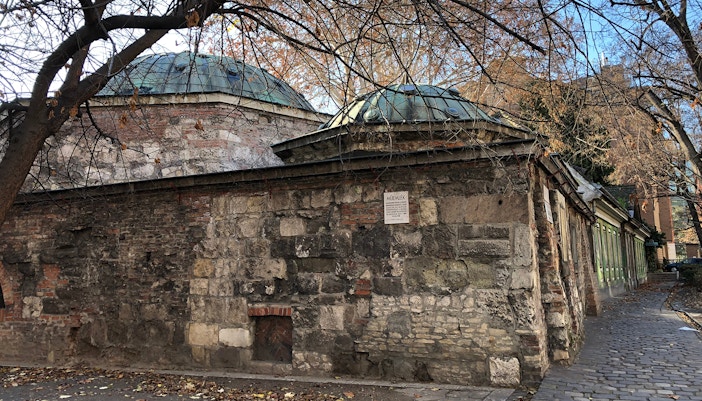Although Turkish baths are a central feature of the Islamic world, their layout was largely inspired by the Roman and Greek bathhouses, with a sequence of progressively hotter rooms. Beginning from the changing room, a visitor would pass through the transitional space and then enter the hot bathing room. These bathing rooms featured a marble sweat stone at the center, where visitors were massaged. Additionally, small washbasins of running water were stationed along the walls. These baths were first and foremost centers of ritual cleansing before worship. But they also served as gendered gathering places for the community.

